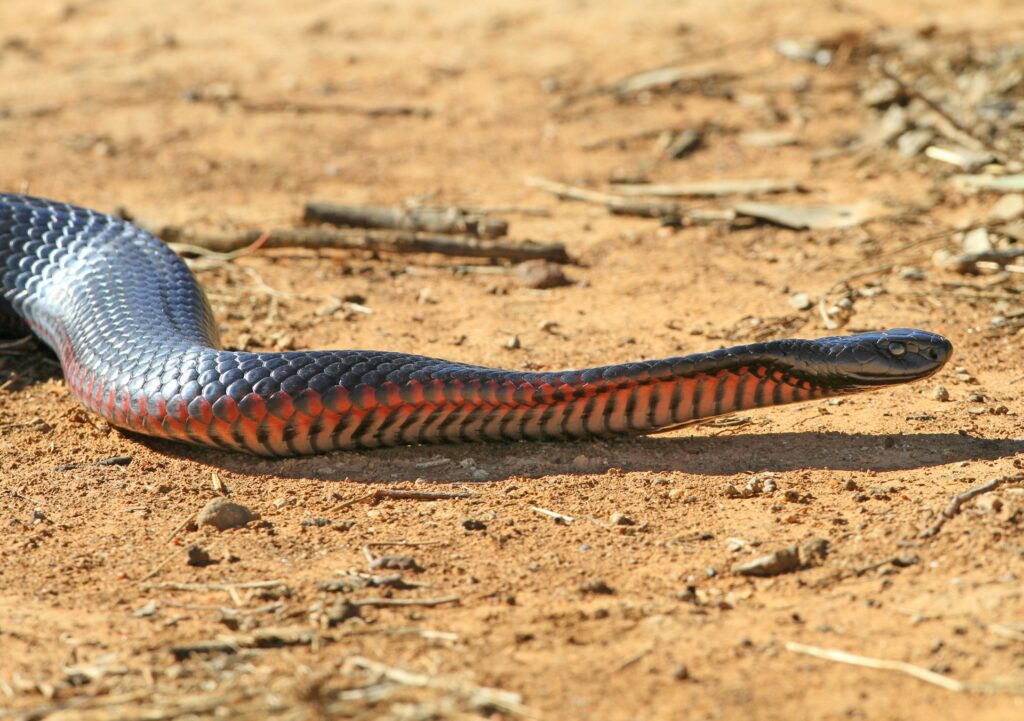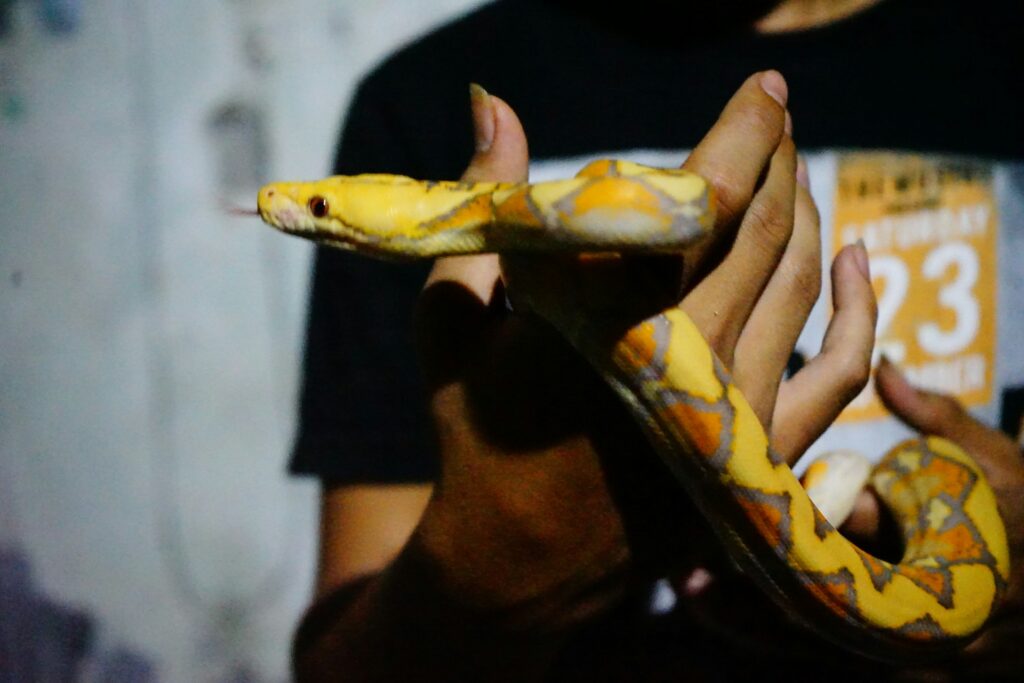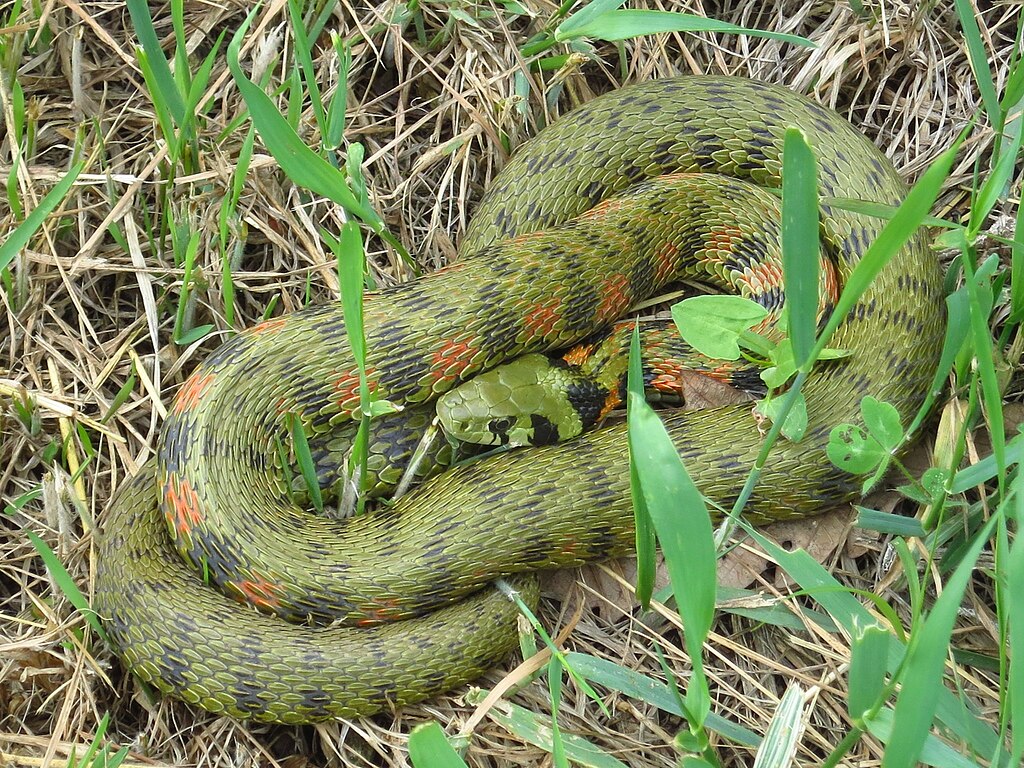If you’ve ever observed a snake resting in captivity or the wild, you may have noticed they sometimes adopt a peculiar pose – coiled up into what appears to be a formless blob, with their body compressed into thick folds instead of their more familiar elongated shape. This phenomenon, affectionately termed “snake loafing” by enthusiasts and herpetologists alike, isn’t just an endearing quirk but a behavior deeply rooted in reptilian physiology, survival strategies, and environmental adaptation. Beyond the undeniable cuteness factor that draws in thousands of social media likes when pet snakes are photographed in their “loaf” state, this posture serves crucial biological functions. Understanding why and how snakes “loaf” provides fascinating insights into reptilian thermoregulation, defensive tactics, energy conservation, and the remarkable adaptability that has helped these legless reptiles thrive for millions of years across diverse habitats worldwide.
What Exactly Is Snake Loafing?

Snake loafing refers to a distinctive resting position where a snake compresses its body into loose, overlapping coils, creating a compact, blob-like form reminiscent of a loaf of bread. Unlike the tight defensive coiling where the head is typically protected in the center, loafing involves a more relaxed posture where the snake’s body appears somewhat flattened against the surface. The snake’s muscles are visibly relaxed during loafing, and the body segments may seem to melt into one another, creating an almost amorphous silhouette. This behavior is observed across numerous snake species, from small corn snakes and ball pythons to larger species like boas and certain vipers, though the exact appearance of the “loaf” may vary based on the snake’s body length, thickness, and individual preference. The term itself is a colloquial descriptor that has gained popularity among reptile enthusiasts, drawing parallels to the similarly named phenomenon of “cat loafing,” where felines tuck their limbs underneath their bodies.
Thermoregulation: The Primary Driver of Loafing

The most significant reason behind snake loafing is thermoregulation – the process by which these ectothermic (cold-blooded) animals maintain optimal body temperature. Unlike mammals, snakes cannot generate their own body heat and must rely on environmental sources to warm themselves. When a snake adopts the loafing position, it maximizes the amount of its body surface that comes in contact with a warm substrate, while simultaneously minimizing the surface area exposed to cooler air above. This compact configuration also helps retain heat that the snake has already absorbed, creating a more stable thermal environment for its body. Research has shown that snakes in cooler environments will loaf more frequently, especially on surfaces that hold heat well, such as rocks that have been warmed by the sun or heated areas in captive enclosures. The effectiveness of loafing for thermoregulation is so significant that some species can maintain their preferred temperature range for hours longer in this position compared to when they’re fully extended.
Energy Conservation Through Relaxed Positioning

Snakes are masters of energy efficiency, and the loafing position represents one of their most effective energy conservation strategies. When a snake loafs, it reduces muscular tension throughout its body, requiring significantly less energy expenditure than when maintaining vigilance in a more alert posture. This relaxed state allows snakes to enter a form of light dormancy where metabolic processes slow down, conserving precious energy reserves between feeding periods. For many snake species that may go weeks or even months between meals, this energy-saving position becomes crucial for long-term survival. Studies monitoring snake metabolism have demonstrated that oxygen consumption can decrease by up to 27% when a snake adopts a loafing position compared to when it maintains a more extended posture. This energy efficiency becomes particularly important during periods of food scarcity or during seasonal changes when prey may be less abundant, allowing snakes to stretch their energy reserves further without compromising their basic physiological functions.
Defensive Advantages of the Loaf Position

While the loafing position might appear vulnerable, it actually offers several defensive advantages that have contributed to its evolution as a common behavior. By compressing their body into a compact mass, snakes reduce their visual profile, making them less conspicuous to potential predators scanning their environment. The irregular shape of a loafing snake breaks up the recognizable serpentine silhouette that predators have evolved to identify, serving as a form of cryptic camouflage even when the snake isn’t concealed under cover. Additionally, the loafing position places the snake in a state of readiness from which it can quickly spring into action if threatened – unlike a fully extended position, which would require more time to gather into a strike-ready posture. For venomous species, this ability to rapidly transition from apparent relaxation to defensive striking capability provides a significant survival advantage. Herpetologists have observed that many snake species will maintain their loafing position even when initially disturbed, relying on their camouflage before resorting to more active defensive measures if the threat persists.
The Role of Substrate in Shaping Loafing Behavior

The type of substrate a snake rests upon significantly influences both the frequency and specific form of its loafing behavior. Snakes demonstrate clear preferences for certain substrates when adopting the loaf position, typically favoring surfaces that provide a combination of security, comfort, and thermal properties. Rough textured substrates that offer good grip allow snakes to maintain stability in their loafing position without exerting additional muscular effort. In captivity, snake owners often observe that their pets display more frequent and pronounced loafing behavior on substrates like reptile carpet, smooth stones, or specially designed heat mats that conduct warmth efficiently. Wild snakes similarly show preferences for natural surfaces like sun-warmed rocks, packed earth, or even the broad leaves of certain plants that provide both support and thermal benefits. Interestingly, substrate depth also plays a role, with many species preferring to loaf on slightly elevated surfaces rather than in depressions, possibly because this provides better environmental awareness while still maintaining the benefits of the compressed posture.
Loafing Patterns Across Different Snake Species

While loafing is observed across numerous snake species, the specific patterns and preferences vary significantly based on evolutionary adaptations and habitat specializations. Arboreal species like emerald tree boas and green tree pythons may loaf differently than terrestrial species, often forming their compressed resting position along branches while maintaining enough grip to prevent falling. Desert-dwelling species like sidewinders and sand boas frequently display loafing behavior during the cooler morning hours specifically on substrates that warm quickly with the rising sun. Aquatic and semi-aquatic snakes such as water moccasins and garter snakes may adopt modified loafing positions at the water’s edge, allowing them to quickly retreat into water if threatened while still benefiting from the thermoregulatory advantages of the posture. Particularly interesting are the variations seen in heavy-bodied pythons and boas, whose substantial muscle mass creates distinctive loafing formations that maximize surface contact with warm substrates while maintaining their ability to respond quickly to environmental stimuli. These species-specific adaptations demonstrate how the basic loafing behavior has been refined through natural selection to meet the particular ecological needs of different snake lineages.
The Physiology Behind the Blob: Muscle Relaxation Mechanisms

The distinctive blob-like appearance of a loafing snake is made possible by the remarkable muscular system these reptiles possess. Unlike mammals with their relatively rigid skeletal structure, snakes have extraordinarily flexible bodies featuring hundreds of vertebrae (ranging from 200-400 depending on the species) and a corresponding network of specialized muscles that allow for their characteristic mobility. When a snake loafs, it engages in a controlled relaxation of its epaxial muscles – the muscles running along the spine – while maintaining minimal tension in its hypaxial muscles, which control the lower portions of its body. This selective relaxation creates the flattened appearance while still allowing the snake to maintain the basic structural integrity needed for quick movement if necessary. Fascinatingly, snakes possess specialized nerve receptors in their skin and muscles that continuously monitor pressure and position, allowing them to achieve this precise state of partial relaxation without compromising their ability to respond to threats. Histological studies of snake musculature have revealed a higher density of slow-twitch muscle fibers in the regions most commonly involved in maintaining the loafing position, suggesting evolutionary adaptation specifically supporting this energy-efficient resting posture.
Seasonal Variations in Snake Loafing Behavior

Snake loafing behavior demonstrates distinct seasonal patterns that reflect changing environmental conditions and the corresponding physiological needs of these animals. During cooler seasons, many snake species dramatically increase their loafing time, sometimes spending upwards of 20 hours per day in this position to maximize heat retention and minimize energy expenditure. This behavior becomes particularly pronounced during the transitional periods of early spring and late fall when temperature fluctuations are most extreme and thermoregulation becomes more challenging. Conversely, during peak summer months, snakes in hot environments may loaf primarily during morning and evening hours while seeking complete shade or burrows during the hottest part of the day to avoid overheating. Breeding season also influences loafing behavior, with male snakes typically reducing their loafing time as they actively search for mates, while gravid females often increase loafing, particularly on warm substrates that benefit their developing embryos. Long-term studies tracking seasonal behavior patterns have revealed that some snake species adjust their preferred loafing locations throughout the year, selecting different microhabitats based on their specific seasonal thermoregulatory needs.
Loafing Behavior in Captive Versus Wild Snakes

The expression of loafing behavior differs significantly between captive and wild snake populations, providing important insights for both conservation efforts and proper husbandry practices. Captive snakes typically display more frequent and prolonged loafing behavior compared to their wild counterparts, largely due to the reduced need for active foraging and the more controlled thermal environment provided in captivity. This increased loafing often correlates with the strategic placement of heat sources in enclosures, with snakes predictably forming their loafing positions directly on or adjacent to under-tank heaters, heat rocks, or beneath basking lamps. Wild snakes, contrastingly, must balance their loafing time with other crucial activities like hunting, seeking water, and avoiding predators, resulting in shorter, more opportunistic loafing periods that align with favorable environmental conditions. Interestingly, field research has demonstrated that wild snakes often establish regular loafing locations within their home range – specific spots with ideal sun exposure, substrate type, and security that they return to repeatedly. These behavioral differences highlight the adaptability of snakes and the importance of providing appropriate thermal gradients and substrate options in captivity to allow natural behavior expression.
The Connection Between Digestion and Loafing

Snake loafing behavior is intimately connected to their digestive processes, with distinct patterns emerging during the post-feeding period. After consuming a meal, particularly a large one, snakes typically increase both the frequency and duration of their loafing behavior as part of their digestive strategy. This positional preference occurs because the compact loafing posture helps optimize the body temperature needed for efficient digestion while minimizing energy expenditure during this metabolically demanding process. Physiological studies have demonstrated that snakes can increase their metabolic rate by up to 44 times their resting rate during digestion, a phenomenon known as specific dynamic action (SDA), which generates internal heat that complements external heat sources. The loafing position also accommodates the physical distension caused by large prey items, allowing the snake to position its stretched digestive tract comfortably while maintaining vigilance through its exposed head position. For species that consume particularly large prey relative to their body size, such as ball pythons or boa constrictors, this post-feeding loafing period may extend for several days as they slowly digest their meal, during which time they’re notably less responsive to external stimuli and more dedicated to maintaining optimal digestive conditions.
Recognizing Health Issues Through Abnormal Loafing

For experienced reptile keepers and veterinarians, changes in a snake’s typical loafing behavior can serve as important early indicators of potential health problems. Healthy loafing involves a relaxed but responsive posture, with the snake capable of alert movement when stimulated despite its compressed resting state. When a snake is ill, its loafing position may appear unusually rigid, asymmetrical, or may involve awkward positioning that suggests discomfort rather than relaxation. Respiratory infections often cause snakes to elevate the anterior portion of their body even while loafing, creating an abnormal posture that facilitates easier breathing. Digestive issues might be indicated by a snake that suddenly stops loafing after meals or adopts unusual contortions that appear to be attempts to relieve internal discomfort. Neurological problems can manifest as inability to maintain a symmetrical loaf position or unusual tremors while attempting to rest in this normally stable posture. Temperature-related stress might be indicated if a snake persistently loafs in inappropriate locations within its enclosure, such as far from heat sources during cool periods or directly on heat sources that would normally be too warm for extended contact. These behavioral changes underscore the importance of understanding normal loafing patterns as a baseline for monitoring reptile health.
Cultural and Social Media Fascination with Snake Loafing

The endearing quality of snake loafing has captured significant attention in popular culture and social media, transforming this natural behavior into a beloved phenomenon among reptile enthusiasts and casual observers alike. Hashtags like #SnakeLoaf and #BallPythonBlob regularly trend on platforms like Instagram and Twitter, featuring thousands of photographs showcasing pet snakes in their most compact and rounded resting states. This cultural fascination has helped humanize snakes for many people previously wary of these often-misunderstood animals, highlighting their relaxed, non-threatening behavior patterns rather than reinforcing common fears. Reptile-focused online communities frequently share “loaf comparison” threads where owners playfully compare their snakes’ unique loafing styles, creating a surprisingly wholesome corner of internet culture centered around appreciating reptilian behavior. The popularity of snake loafing has even influenced commercial products, with specialty snake hides and basking spots designed specifically to encourage and showcase this behavior in captive settings. Perhaps most importantly, this social media phenomenon has provided an accessible entry point for public education about snake biology and behavior, with many popular posts including explanations about the thermoregulatory and energy conservation purposes behind the adorable posture.
Creating Optimal Loafing Environments for Pet Snakes

For snake owners seeking to provide enriching environments that facilitate natural loafing behavior, several key habitat considerations can make a significant difference in their pet’s comfort and well-being. Creating a proper thermal gradient within the enclosure stands as the most crucial factor, with a temperature differential of approximately 10-15°F (5-8°C) from the warm side to the cool side, allowing the snake to select its preferred loafing location based on its current thermoregulatory needs. Strategic placement of appropriately sized hides on both the warm and cool ends of the enclosure provides security while still allowing the snake to express natural loafing behavior, with many snakes choosing to loaf at the entrance of their hide where they can remain partially concealed. Substrate selection significantly impacts loafing comfort, with materials that provide good traction and heat conductivity such as reptile carpet, cork bark, or specialized heat-conducting stone platforms being particularly conducive to this behavior. The installation of multiple basking options at different heights creates microclimates within the enclosure, allowing more complex thermoregulatory choices that mirror the varied loafing locations wild snakes would utilize throughout different seasons and times of day. For species with arboreal tendencies, providing sturdy branches or platforms of appropriate width permits the expression of their species-specific loafing positions while satisfying their instinct for elevated resting spots.
Conclusion

Understanding snake loafing behavior provides a fascinating window into the remarkable adaptations that have allowed these reptiles to thrive across diverse environments for millions of years. Far from being merely a cute quirk that delights social media audiences, the snake loaf represents an elegant solution to the fundamental challenges of thermoregulation, energy conservation, and predator avoidance that all ectothermic animals must address. For reptile enthusiasts and herpetologists, recognizing the nuances of this behavior enhances our ability to provide appropriate care for captive specimens while deepening our appreciation for the complex behavioral adaptations that wild snakes employ. Whether observed in a pet ball python contentedly compressed on its favorite basking spot or a wild rattlesnake optimizing its morning sun exposure on a desert rock, the snake loaf stands as a testament to the remarkable efficiency an





